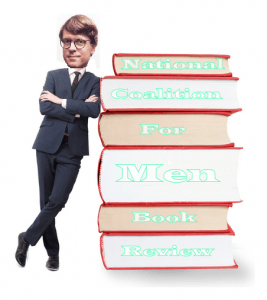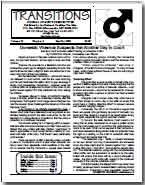 Gender Inclusive: Essays on violence, men, and feminist international relations. By Adam Jones. New York: Routledge, 2009. 313 pp. www.routledge.com. No price printed on book but website gives price as $140.
Gender Inclusive: Essays on violence, men, and feminist international relations. By Adam Jones. New York: Routledge, 2009. 313 pp. www.routledge.com. No price printed on book but website gives price as $140.
Routledge has published a book-length collection of his essays on gender and genocide by Gendercide Watch Executive Director and Canadian Political Science Professor Adam Jones. While these articles were all previously published, and some duplication and overlap is inevitable with collections of this nature, nevertheless many of them are as a practical matter impossible to track down today, and having them all together in one place in permanent, book form is in any case highly valuable.
Jones is a longtime warrior for genuine gender equity, tirelessly advocating for the human rights community to address human rights violations in a fair and accurate manner independent of the sex of the perpetrator and the sex of the victim. The collected articles were published over a span of nearly two decades, and accordingly it is inevitable that at least some of the earlier pieces suffer from the intervening passage of time.
Having said that, Jones has throughout his career been a razor-sharp analyst as well as a highly skilled writer. Even the first articles he published still provide worthwhile reading, as with the book’s first piece, his 1990 analysis of sexism at Canada’s largest daily newspaper, the Toronto Globe and Mail.
His book has much to offer, such as the disheartening information that the right to vote is often denied to parolees, and that at least in the US, males are actually raped more often than females. Even facts we may already know—the factor most strongly correlated with being on death row is not skin color, race, ethnic origin, or IQ, but rather sex—bear repeating, and Jones is up for the task. We learn that, “Women are more likely to be dropped out of the system the further the capital punishment system progresses.” The author makes a compelling case for invoking a rarely heard phrase, “men and minorities.” While female victims are usually identified as such in media coverage, male victims routinely find themselves referred to in a way that anonymizes their sex. As the author shows, female victims even predominate in discussions of topics “in which male victimization is prominent or predominant.”
Depressingly, in considering gender and ethnic conflict in ex-Yugoslavia, Jones finds that “the United Nations and other international agencies involved in refugee evacuation have tended to accommodate themselves to the blatantly discriminatory rules laid down by Serb occupiers,” such as rules barring an male with combat potential from being evacuated. In another article, “Toward an International Politics of Gender,” Jones pointedly comments:
If masculine privilege is so all-pervasive and absolute, we must ask (in a developed-world context at least) why it is that men live substantially shorter lives than women, kill themselves at rates vastly higher than women, absorb close to one hundred percent of the fatal casualties of society’s productive labor, and direct the majority of their violence against “their own” ranks.
One engaging piece (originally published in Transitions!) addresses several interlocking media strategies for concealing male victimization. “The effacing of male victims in mass media is generally accomplished by three interrelated strategies. The first might be called incidentalizing…. A second strategy is displacement…. Males as agents of violence were visible, and gendered; as victims, they were effaced from the discourse…. The third marginalization strategy is simply exclusion.” [italics in original] Jones goes on to show that even in those rare cases where the media expresses any concern or interest in the fate of males, it tends to be after the fact, when it is far too late for any men’s lives to actually be thereby saved. In the end, the author concludes, reasonably enough yet devastatingly, that “no meaningful claim to humanity, fairness, or analytical accuracy can be advanced by those who, consciously or unconsciously, would consign half the human race to second-class status in the humanitarian and policy equation.”
In a short piece for the Globe and Mail called, “Pity the Innocent Man,” Jones powerfully addresses the military draft:
[Th]e practice of gender-selective military conscription is so widely accepted that we have lost the ability to see it for what it is: namely, perhaps the most ubiquitous, severe, and physically destructive act of gender-specific discrimination of all. Why is conscription not considered a “social tradition or cultural norm,” capable of harming men every bit as severely as women are harmed by domestic violence, genital mutilation, or fundamentalist harassment?
Regrettably, Jones is evidently unaware that men are harmed at least as much as women by both domestic violence and genital mutilation [circumcision].
A brief, deceptively simple piece illustrates how profoundly invisible men are in many ways: a Google search for “women and international development” returned 12,700 hits while a similar search for “men and international development returned three (!) hits. Similar disparities are evident throughout the piece.
One important, in-depth article analyzes the extensive, integral roles played by women in such human rights holocausts as those that took place in Rwanda and Nazi Germany. “Remarkably,… for a phenomenon that was as old as recorded history… the gender-selective killing of community males had never received sustained or systematic attention, in the genocide-studies literature or outside it, at any point, in any language.” Similarly, the author finds in the succeeding article on genocide and gendercide that “gendercide, at least when it targets males, has attracted virtually no attention at the level of scholarship or public policy. As such, it can be classed as one of the great ‘taboo’ subjects of the contemporary age.” All too often, Jones shows, noncombatant males are conflated with soldiers as presumably expendable, while attacks on “womenandchildren” are defined as the truly egregious violations.
In the following article, about gendercide and genocide in Rwanda, Jones “offers up a truly spectacular self-contradiction [by human rights analyst Aloysia Inyumba], in consecutive sentences no less: she claims that ‘The genocide in Rwanda is a far-reaching tragedy that has taken a particularly hard toll on women. They now comprise 70 percent of the population, since the genocide chiefly exterminated the male population.” [italics in original] The author goes on to note that “such commentary as exists on gender and genocide has tended to actively suppress the male experience… Such an approach should be seen as a betrayal of the spirit of human rights work…”
Another article expands on the vulnerability of “battle age males,” showing that in the three “classic” genocides of the twentieth century—against Turkish Armenians, European Jews, and the Tutsis of Rwanda–“fullscale genocide was preceded by a wide range of gender-selective measures, including mass roundups and localized killings of men.” Sadly, the UN and human rights non-governmental organizations (NGOs) “have, on balance, paid only the most limited attention to the vulnerability of the group most typically targeted in genocidal killing—younger, ‘battle-age’ males.”
Jones repeatedly, forcefully calls for an inclusive approach to gender and human rights violations, whereby the sex of a victim is considered in relation to their victimization regardless of whether they are male or female, and particularly for unusually vulnerable populations requiring special attention such as “battle-age males.” The author also calls on the UN to establish a Special Rapporteur for Violence Against Men in parallel with the rapporteur that already exists to address violations against women, and Jones even outlines in detail several of the most important functions to be served by such a rapporteur. Jones also reminds us of the shocking fact that even today, Article 11 of the International Labor Organization’s Convention Concerning Forced or Compulsory Labor allows for adult men between the apparent ages of 19 and 45—and no one else—to be subjected to forced labor. Ever fair-minded, Jones also devotes a chapter to his theory regarding genocidal institutions against women and girls such as female infanticide and feticide, maternal mortality, and gendered deficits in health care, education, and nutrition. He claims that such institutions have killed a number of women that “vastly exceeds the number of women or men killed in politico-military gendercides.” [italics in original]
Gender Inclusive does suffer from some flaws that should have been easily fixable (certainly for a book selling for a price well into the triple digits), such as multiply repeated self-quotations, references to “this volume” that in fact are directed to the article’s original place of publication and not the current book (!) and, similarly, citations to previous articles by the author that are included in the present volume but that are cited only using the original publication information.
Adam Jones, not to put too fine a point on it, is a force for good. If his book is out of your price range, have your local library do an interlibrary loan for it. His book’s erudition and passion will amply repay your efforts.


